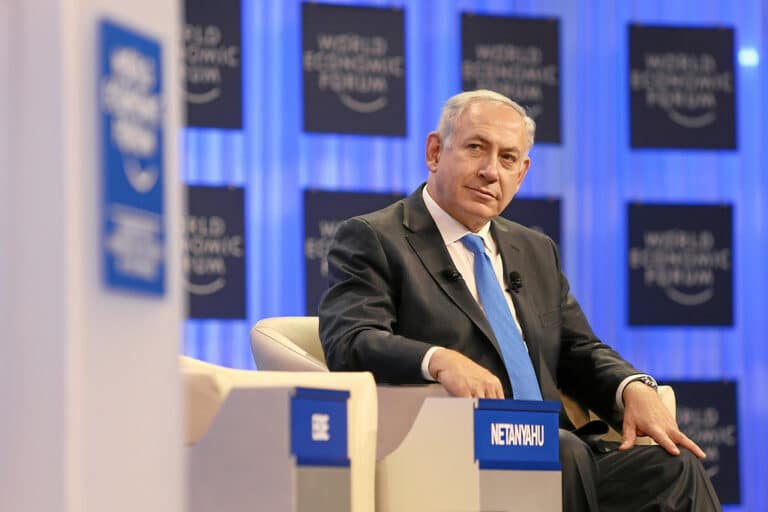
What Happened?
In an election speech, PM Benjamin Netanyahu pledged to apply sovereignty to the Jordan Valley portion of the West Bank. This area, which is currently controlled by Israel, is home to about 10,000 Israelis and 9,000 Palestinians (excluding roughly 40,000 in Jericho and al-Auja, which would be encircled but not included in this plan). Speaking just a week before Israeli national elections, he stated: “If I receive from you, citizens of Israel, a clear mandate to do so… today I announce my intention to apply, with the formation of the next government, Israeli sovereignty over the Jordan Valley and northern Dead Sea.” His statement received attention from the Israeli right, the Israeli left, Palestinians, and the international community.
Why Does This Matter?
- What is annexation in the first place?
Annexation is a complicated concept in international relations, one that is much disputed today. It is the act of incorporating another country (or parts of it) into your own. One example is U.S. annexation of Hawaii in 1898. In 1967, Israel captured large territories in its defensive Six Day War: The Golan Heights from Syria, Sinai from Egypt, and the West Bank and East Jerusalem from Jordan. Israel later returned Sinai and annexed the Golan Heights and East Jerusalem. The West Bank has remained a contentious topic; Jordan relinquished its claim to it in 1988, so from a legal perspective, to use the term “annexation” is problematic, since it does not and has not belonged to any other country. It is relevant to note that over 100 countries recognize Palestine as a country, even though it is not, and never has been, a state. The Oslo Accords of 1993-5 divided up the West Bank into three areas: A – under Palestinian Authority (PA) control, B – under joint PA-Israeli control, and C – under Israeli control. Israeli areas in the West Bank are known as “settlements.” Some people consider this area “occupied territory,” others call it “disputed territory,” and still others view it as part of “Greater Israel.” The Jordan Valley is Area C, excluding a few Area A Palestinian locations within it. There are additional international legal issues involved, and the whole subject is an extremely complicated one. Keep an eye out for our upcoming videos on the subject. Complicating matters even more, PA Prime Minister Mohammed Shtayyeh earlier announced that the Palestinians would start building throughout the West Bank, including in Area C. - Is the term “occupied” a fair one or not?
The very term “occupation” is a loaded one, and we will not spill too much ink on this topic right now (Look out for our upcoming videos on the settlements!). Within Israel itself, there is a serious dispute regarding terminology. Israel’s Ministry of Foreign Affairs has said that “Israel’s presence in the territory is often incorrectly referred to as an ‘occupation.’…The last recognized sovereign of the West Bank and Gaza was the Ottoman Empire, which ceased to exist following the first World War. The Jordanian and Egyptian control over the West Bank and Gaza, respectively, following 1948 was never recognized by the international community. Consequently, the West Bank can best be regarded as disputed territory over which there are competing claims that should be resolved in peace talks.” So, not occupied. Yet, according to the State of Israel’s High Court of Justice, “Since 1967, Israel has been holding the areas of Judea and Samaria in belligerent occupation.” This was set forth in the Alfei Menashe case in 2004-2005. In that case, it was determined that “the legal meaning of this view is twofold: first, Israeli law does not apply in these areas. They have not been ‘annexed’ to Israel. Second, the legal regime which applies in these areas is determined by public international law regarding belligerent occupation.” So, occupied. Some in Israel have voiced frustration with this ruling by the Supreme Court. - Why the Jordan Valley?
The Jordan Valley is a strip of land to the east of the West Bank of the Jordan River. It is an area, like the Golan, that most Israelis, including the center-left, consider to be rightfully theirs and an area vital to Israel’s security. Michael Koplow of the Israel Policy Forum explains why Netanyahu chose to focus on this area rather than other parts of the West Bank: “Even as he is vying for the far-right vote, Bibi went for what codes to most Israelis as an area that ‘has to stay in our hands.’ In so doing, he challenged his rivals to explain why such a move would be reckless or illegitimate.” So, in addition to appealing to right-wing voters, Netanyahu forced his main rival, Blue and White Benny Gantz, to essentially agree with him on this topic. The Allon Plan, conceived immediately after the Six Day War, had the intention of never letting go of the Jordan Valley. It was and is a vital strategic military area. - Pre-election promises
Netanyahu made this announcement one week before Israel’s national elections. Many are skeptical of Netanyahu’s words and view them as an empty promise made to obtain votes. To the right, Ayelet Shaked, head of Yamina, stated: “This is just a declaration. There is no action here… Applying sovereignty [to the Jordan Valley] can be done in a cabinet decision. There is no need for legislation” and as such Netanyahu could have done so before the elections. Itamar Ben-Gvir, head of the far-right Otzma Yehudit, said that Netanyahu has promised many things in the past that he hasn’t followed through on regarding settlements, so he does not believe him now when he says he will act. Blue and White co-leader Yair Lapid asserted that Netanyahu “doesn’t want to annex lands, he wants to annex votes,” echoing the sentiment that Netanyahu could have annexed the Jordan Valley long ago.
Diversity Of Perspectives Within Israel
Ahead of Israel’s April elections, a Haaretz poll found that 42% of Israelis support some form of West Bank annexation. This number points to the divisive nature of the topic within Israeli society.
As noted above, many politicians view Netanyahu’s statement as a mere attempt to gain votes, and that he will not follow through. Others are taking his statement more seriously, though, with some seeing it as a potential break-through and some as a potential travesty. Journalist Caroline Glick (author of the telling book The Israeli Solution: A One-State Plan for Peace in the Middle East) points to the fact that Netanyahu has a relationship with U.S. President Donald Trump that is unprecedented for Israeli and American premiers, and a rare opportunity to use it to Israel’s advantage. The fact that sources in Washington have acknowledged that there is no contradiction between Netanyahu’s plan the White House’s, she argues, is a major deal. Gershon Bashkin, on the other hand, founder of Israel/Palestine Center for Research and Information (IPCRI), made the dramatic statement that Netanyahu has “declared war” on the two-state solution. Addressing the prime minister harshly, he said: “Your annexation plan is shooting the first shot of a third intifada. You have declared war on the chances of living in peace for the foreseeable future.”
Many Jewish residents of the West Bank celebrated Netanyahu’s announcement. David Elhayani, mayor of the Jordan Valley Regional Council, explained: “Security and settlements go together.” Palestinian residents, on the other hand, denounced it. Chief Palestinian negotiator Saeb Erekat explained: “It’s impossible to have a Palestinian state without the Jordan Valley.”
What’s unique (and complicated) about this issue is the fervor with which staunch Israel supporters believe either that annexation and settlement expansion is the only way to establish Israel’s security or that it’s the country’s biggest impediment to peace. As Israeli author, Micah Goodman puts it, “Israel’s presence in the territories both fulfills Zionism and contradicts Zionism… It turns out that everyone is right, and since everyone is right – all are trapped” (Catch-67).
Originally Published Aug 16, 2019 11:21AM EDT
